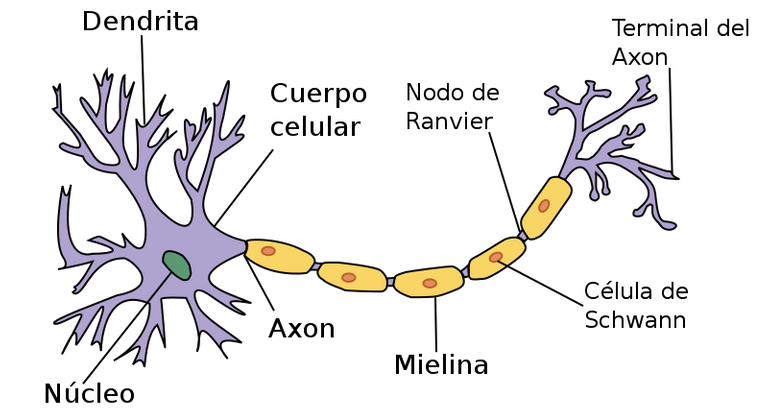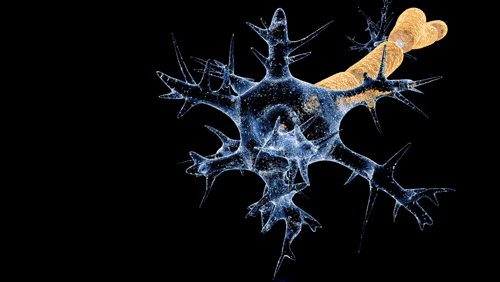Guillain-Barré syndrome causes and treatments.
Hello Hive community, today I bring you a very interesting topic Guillain-Barré Syndrome.
Guillain-Barré Syndrome (GBS) is a rare but potentially serious neurological disease that affects the peripheral nervous system. It is characterized by inflammation that damages peripheral nerves and can cause muscle weakness and paralysis.
The exact cause of GBS remains unknown. It is believed to be an autoimmune disease, meaning that the body's immune system mistakenly attacks its own peripheral nerves. It has also been linked to previous infections, including respiratory and gastrointestinal infections, as well as the flu shot and other vaccines.
Some known risk factors for GBS include age (most cases occur in adults older than 50), male gender, genetics, and certain autoimmune diseases.
Pathophysiology of Guillain-Barré Syndrome (GBS) In GBS, the body's immune system produces antibodies that attack peripheral nerves, resulting in inflammation and nerve damage. This inflammation prevents the nerves from transmitting electrical signals correctly, causing muscle weakness and, in severe cases, paralysis.
GBS usually starts in the feet and legs and spreads up the body. Symptoms include muscle weakness, numbness, tingling, and in severe cases, paralysis. GBS can also affect the respiratory muscles, which can lead to serious and life-threatening breathing problems.
There is no cure for GBS, but treatments are available to help reduce inflammation and improve symptoms. Treatments include:
Intravenous Immunoglobulin (IVIG): An infusion of antibodies that help reduce inflammation.
Plasmapheresis: A process in which blood is removed from the body, the plasma (the liquid part of the blood that contains antibodies) is separated, and replaced with intravenous fluids.
Physical therapy and occupational therapy – to help restore muscle strength and function.
Early treatment is essential for a successful recovery. In some cases, GBS symptoms can last for months or even years. However, with proper treatment and proper medical care, most people make a full recovery.
The diagnosis of GBS is usually based on a combination of symptoms, neurological examination, and diagnostic tests. Tests include a blood test to look for signs of inflammation, a lumbar puncture to measure the presence of abnormal proteins in the cerebrospinal fluid, and nerve conduction tests to measure the speed and strength of electrical signals traveling along nerves.
It is important to seek immediate medical attention if GBS symptoms are experienced, as the disease can progress rapidly and cause serious complications if left untreated.
Thanks for reading me!
Informative References:
• Síndrome de Guillain-Barre descripción general
Text translated with Google Translate.
Banner created in Canva.

Síndrome Guillain-Barré causas y tratamientos.
Hola comunidad de Hive hoy les traigo un tema muy interesante El Síndrome de Guillain-Barré.
El Síndrome de Guillain-Barré (GBS) es una enfermedad neurológica rara pero potencialmente grave que afecta el sistema nervioso periférico. Se caracteriza por una inflamación que daña los nervios periféricos y puede causar debilidad muscular y parálisis.
La causa exacta del GBS sigue siendo desconocida. Se cree que es una enfermedad autoinmune, lo que significa que el sistema inmunológico del cuerpo ataca por error los propios nervios periféricos. También se ha relacionado con infecciones previas, incluidas infecciones respiratorias y gastrointestinales, así como con la vacuna contra la gripe y otras vacunas.
Algunos factores de riesgo conocidos para el GBS incluyen la edad (la mayoría de los casos ocurren en adultos mayores de 50 años), el sexo masculino, la genética y ciertas enfermedades autoinmunitarias.
Fisiopatología del Síndrome de Guillain-Barré (GBS) En el GBS, el sistema inmunológico del cuerpo produce anticuerpos que atacan los nervios periféricos, lo que resulta en inflamación y daño a los nervios. Esta inflamación impide que los nervios puedan transmitir señales eléctricas correctamente, lo que causa debilidad muscular y, en casos graves, parálisis.
El GBS generalmente comienza en los pies y las piernas y se extiende hacia arriba en el cuerpo. Los síntomas incluyen debilidad muscular, entumecimiento, hormigueo y, en casos graves, parálisis. El GBS también puede afectar los músculos respiratorios, lo que puede llevar a problemas respiratorios graves y potencialmente mortales.
No hay cura para el GBS, pero existen tratamientos disponibles para ayudar a reducir la inflamación y mejorar los síntomas. Los tratamientos incluyen:
Inmunoglobulina intravenosa (IVIG): una infusión de anticuerpos que ayudan a reducir la inflamación.
Plasmaféresis: un proceso en el que se extrae la sangre del cuerpo, se separa el plasma (la parte líquida de la sangre que contiene anticuerpos) y se reemplaza con líquidos intravenosos.
Fisioterapia y terapia ocupacional: para ayudar a recuperar la fuerza y la función muscular.
El tratamiento temprano es esencial para una recuperación exitosa. En algunos casos, los síntomas del GBS pueden durar meses o incluso años. Sin embargo, con un tratamiento adecuado y una atención médica adecuada, la mayoría de las personas se recuperan por completo.
El diagnóstico del GBS generalmente se basa en una combinación de síntomas, examen neurológico y pruebas de diagnóstico. Las pruebas incluyen un análisis de sangre para buscar signos de inflamación, una punción lumbar para medir la presencia de proteínas anormales en el líquido cefalorraquídeo y pruebas de conducción nerviosa para medir la velocidad y la fuerza de las señales eléctricas que viajan por los nervios.
Es importante buscar atención médica inmediata si se experimentan síntomas de GBS, ya que la enfermedad puede progresar rápidamente y causar complicaciones graves si no se trata.
Gracias por leerme!
Referencias Informativas:
• Síndrome de Guillain-Barre descripción general
Texto traducido con Google Translate.
Banner creado en Canva.



